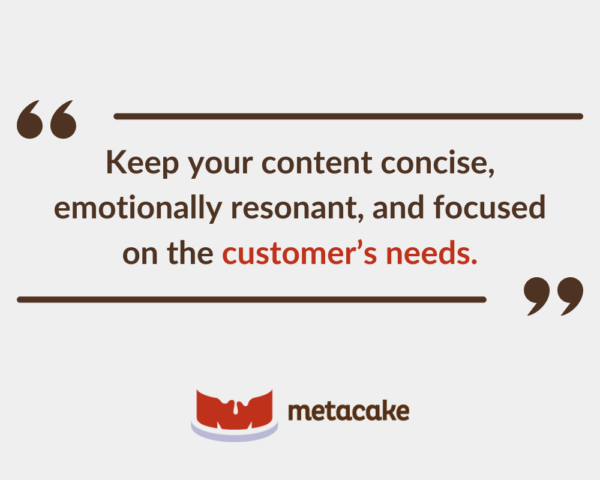Your ecommerce homepage doesn’t need to be complicated. It should introduce your brand and serve as a routing page for the rest of your site, catering to the broadest audience that’ll visit your store.
Still unsure of what to do? We’ve got you covered. In this guide, we’ll walk you through our ecommerce homepage best practices.
How to Construct a Successful Ecommerce Homepage: Best Practices
Your Homepage’s Goals
Your homepage’s goals are the following, in priority order:
- Orient visitors: Why are they on your site? What do you do?
- Create an emotional connection: People take action based on emotion, not information.
- Build trust and credibility: Features, benefits, and a great price are not enough to inspire people to purchase.
- Inspire action: Humans procrastinate unless given a reason to act.
Your homepage is the first place most people will interact with your ecommerce site. Upon landing there, the visitor must learn within five seconds who you are, what you do, why you do it, and why they should care.
This might seem like a lot of information to convey in a first impression, but you’d be surprised by how much information you can relay with smart, concise copy and effective imagery.
Emotion motivates action, so make sure your homepage connects with your visitors. Shift the focus of your homepage (and your sales pitch in general) off yourself to your customers, and show them how your brand and your products will improve their lives.
Sections of the Perfect Ecommerce Homepage: Best Practices
Let’s review the homepage structure that’ll capture visitors’ attention and convert them into customers. These sections represent some of the most important ecommerce homepage best practices.
1. The Hero
First, feature an intriguing headline that makes a bold claim about your brand (that you can support, of course). Follow it with a sentence or two of clarifying, practical subtext to explain what you do and what you offer. Give just enough information to orient a visitor and allow them to dig deeper.
Include a CTA to “learn more” or “shop now.” This way, visitors can jump directly to the next step of the funnel if they’re ready.
2. The Why
Explain why your brand exists in two to three sentences. This way, you can connect with your customers emotionally by explaining not just what you do but why you do it. You could also use a video.
3. The Evidence
Next, back up your bold claims about your brand with some evidence.
This could be research into your product, proof that it works, a list of brands that use your product, or even a feature of PR mentions in noteworthy publications. The more genuine, factual, and transparent you make this section, the more effective it’ll be in motivating visitors to purchase.
Include a CTA for customers to “learn more here.”
4. Top Sellers
Now it’s time to introduce your products or services.
People struggle with more than three options. Showcase your best two or three products and include a CTA allowing visitors to “shop all products” if they want to browse beyond that.
5. Social Proof
To build trust with visitors, include social proof of your brand’s success. What do other people say about your brand?
Visitors will listen to a third party before they listen to you. Nothing sells like social proof, and it’s the single biggest factor in improving conversion rates. Including it on your homepage is a great ecommerce homepage best practice.
Your social proof can be a feed of product reviews or curated testimonials. Add a CTA to “read more” and link to your reviews page or a complete list of legitimate testimonials.
6. Product Categories
Here, either showcase more products or feature your product categories. This gives visitors an easy way to explore the parts of your product line they’re most interested in.
This section heavily depends on your product line’s size. If your product line is limited, describe a specific product feature.
7. Supporting Content
If visitors have made it this far, they’re interested in your brand but haven’t decided to purchase yet.
Answer any remaining questions they may have. Feature your top FAQs with answers, showcase your money-back guarantee, or include recent blog posts containing product how-tos.
Once again, include a CTA that links to additional blog posts or FAQs.
8. Social Connection
Make it easy for your site visitors to connect with you on social media. If you’re active on a particular platform, you may even want to include your account feed.
Also, include a place where visitors can sign up for your email newsletter, with an incentive.
9. The Functional Footer
Make your footer functional. Include a list of menu items linking to your site’s important content and customer service pages. You could also include a second email sign-up form.
Ecommerce Homepage Best Practices: Final Tips
Implementing these ecommerce homepage best practices will create a well-structured, engaging front page for your online store.
Keep your content concise, emotionally resonant, and focused on the customer’s needs. With these elements in place, you’ll create an ecommerce homepage that looks great and converts visitors into loyal customers.

